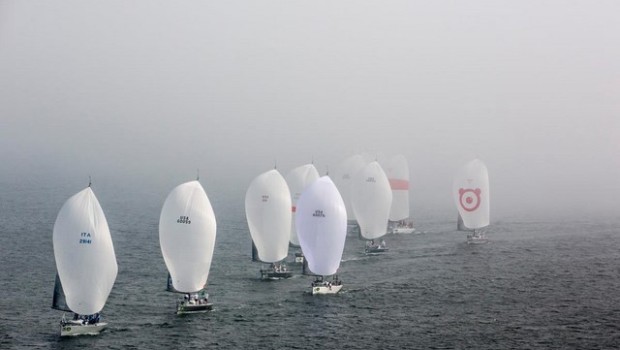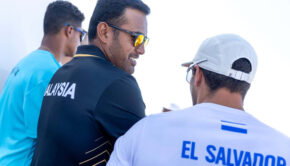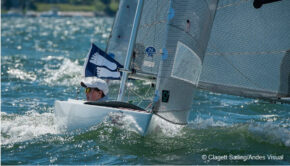Should there be Race Management Standards for Fog?
Published on January 29th, 2014
Racing in fog is like racing in the dark, literally. But while overnight races have certain safety requirements, daytime races with fog typically do not. Should there be standards for race committees to lean on for when visibility decreases? Follow along and share your comments…
Dick Neville, Storm Trysail Club:
At the 25th Block Island Race Week last summer, the last two days of the event had fog. While not unusual for that venue in late June, it led to some hard decisions for the race committee and competitors.
On Thursday we did not race on 3 of the 4 circles. On Friday, the forecast was for the fog to lift so in an effort to get some final racing in, we went out in the fog. On one circle was the J/80 North American Championship, which was decided in condition where the contenders could not see their competition, or the weather mark until they were very close to it.
Is this fair racing?
There was another North American Championship on the line on a big boat circle, where the PRO was pressured by some competitors to go racing. The Navy TP52 Coach expressed his opinion that sailing downwind at 20 knots into 40+ boats coming upwind, “blinded” by the asymmetric spinnaker (and the fog), was “just crazy”.
Do any classes have rules for racing in fog? What is fair? What is safe?
Bruce Bingman, Storm Trysail Club:
My perspective from both sides of the question is – “it depends”!
I think there at least four factors are involved here: 1. The skill and experience of the skippers; 2. The level of equipment of the boats; 3. The number of competitors and; 4. The speed of the boats involved.
As a racer, so far as I am aware, the Farr 30 class has no fog restrictions (or for that matter no top end wind velocity) and I remember racing in conditions that were extremely uncomfortable (i.e. wisps of fog visible between helm and forestay with total visibility something like 50 feet). The boats go fast and there was little warning before crossing situations. The RC had started in about 500 foot visibility but the fog had closed quickly beyond the starting line. My gut feel as a competitor (in a boat with GPS and other navigational aids) is that at least 5 or 6 boat lengths is the minimum visibility in light to moderate conditions and more in heavier planning or surfing conditions.
As a Race Officer, in considering whether to start a race, I evaluate both my fleet and the actual and expected visibility. For low skill and/or minimal navigational equipment, probably you want visibility of at least 500 yards since competitors are relying on visual navigation and can’t be expected to hit marks right on. For experienced competitors and boats with good nav gear, probably 100 to 200 yards visibility is needed to provide both safe and fair racing. Greater number of competitors and higher boat speed would factor in to increase the visibility distance.
What do you think?








 We’ll keep your information safe.
We’ll keep your information safe.